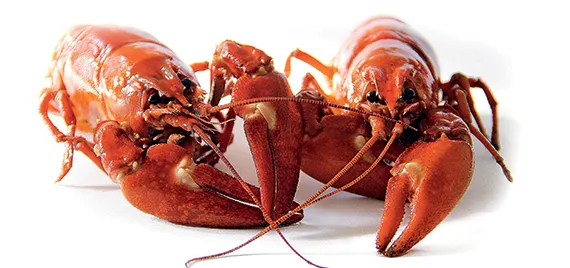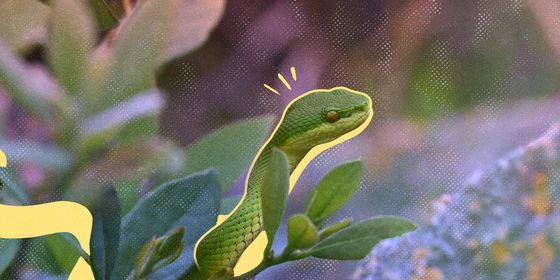A damaging delicacy and the borders of infestation
With summer here, freshwater crayfish, known in Chinese as 小龙虾 (little lobsters) will be scuttling their way to tables around the nation. The culinary popularity of crayfish, cooked with heavy seasoning and enjoyed with beer on a hot summer evening, swept the Chinese mainland in the late 1990s. Its pleasant taste, availability, and lobster-like appearance have made it a popular dish across the nation.
Disturbingly, however, this species of animal is more than a delicacy: it’s an invasive and destructive species.
As the title “invasive species” made its way into the newspapers, the nation figured out that this was a pest that needed to be dealt with (or eaten with a vengeance). Unfortunately, right at this time, rumors started to swirl about this strange creature to scare consumers away: some claimed that it was actually a type of worm, others said that it only lived in dirty water and fed on garbage. The prize for most outlandish theory goes to those who claimed that the crayfish was a conspiracy—a genetically modified species left by the Japanese army who used them as a weapon to dispose of dead bodies (despite the discovery of the DNA double helix coming far too late for that, in 1953). These groundless rumors garnered nation-wide attention, but the real harm these creatures are causing is still lost on many.
Crayfish, or Procambarus clarkii, are native to the Southeastern United States, most commonly found in warm fresh water, such as slowly flowing rivers, marshes, reservoirs, and irrigation systems. In 1927, crayfish made their way from Hawaii to Japan as food for bullfrogs, eventually making their way to China and landing in Nanjing in 1929. It wasn’t until the 1960s that the crayfish became known as a source of food. As with many other invasive species, it was promoted as an economically valuable food with little or no regard for the environmental consequences.
This small, seemingly insignificant little creature has been wreaking havoc on farms and ecosystems around China for a very long time. A hardy species, the crayfish grows and breeds quickly, even in seasonal waters—capable of surviving dry spells, salt water, and low oxygen content in water. As it does so, it feeds on a wide range of aquatic plants and fish and outcompetes the native crayfish species. Not only does it throw aquatic ecosystems into disarray, but it is also playing a destructive role with its burrowing. It damages water tables, decreases the stability of small dams, and, for some rice farmers, the crayfish seems an almost insurmountable foe.
With a history of more than 1,300 years, the rice terraces of Yuanyang County in Yunnan Province, a World Cultural Heritage Site, are being threatened by this tiny, edible freshwater crustacean. The crayfish there can be found over a meter under the soil, causing the terraced fields to leak water and making the growing of crops nearly impossible.
The Hangzhou Daily reported that the crayfish there have destroyed some 30,000 mu (20 square kilometers) of rice paddies, all now full of crayfish holes, rendering them quite useless for growing rice. Also, the China Daily reports that the local government has allocated 1.1 million RMB (176,880 USD) every year since 2012, enough to kill 3.7 million crayfish each year; the authorities also issued rules stating that crayfish farming is not allowed in terraced fields and that no crayfish should be sold.
All of this was the result of a single migrant worker to Yunnan who made the unfortunate decision to raise them on his rice paddy for a bit of extra cash.
Overall, China seems ill-equipped to deal with invasive species such as the crayfish. Indeed, Dr. Liu Wanxue from the Center for Management of Invasive Alien Species says that China didn’t have in-depth research dedicated to invasive species until 2000.
“In the last century, we didn’t have invasion biology. What we did was just pest control in general,” says Liu. “It wasn’t until 2002 that the 973 Program started, and then invasive species research got off the ground in China.”
While academic achievements in monitoring and risk evaluation have made great strides, the practical prevention and control methods remain relatively archaic—including the use of pesticides and the introduction of predators.
China’s biodiversity is suffering an invasion of an estimated 544 non-indigenous species, and, according to Liu, of the 100 most threatening invasive species worldwide, 51 can be found in China. Liu also claims that invasive species cause an estimated loss of over 200 billion RMB every year.
In regard to the crayfish, it’s no surprise that authorities have concentrated their efforts on the economic effects of the crustacean rather than the ecological impacts. In some eastern coastal areas, chemical pesticides are used heavily by fish farmers to eliminate the crayfish, causing no end of havoc on the ecosystems of the area. What’s worse, some of these poisoned crayfish make their way to the market place to be served at tables around the nation.
“Crayfish Invasion” is a story from our latest issue, “Law”. To continue reading, become a subscriber and receive the full magazine. Alternatively, you can purchase the digital version from the iTunes Store or Google Play Store.












